Ever wanted to make so many tokens that Arena doesn’t know what to do? This is the deck you’re looking for.
Hello to all Timeless lovers! My name is Marley, and some of you might know me from my previous work on Sorin Storm and Break Out Zoo, as well as my consistent activity in the general community. Today, I have a special treat for all of my Mono-White chads, including an in-depth breakdown of the most impactful maindeck cards and gameplay tips.
What’s The Plan?
At first glance, this list might seem like a pile of Timmy white cards, but I am here to show you the true power of multiplying tokens like it’s math class. The shell of the deck is built around Guide of Souls and Ocelot Pride (completely revolutionary, I know), and abusing token synergies along with Edge of Eternities’ new warp cards to scam your threats and get maximum value from every hand. The deck is extremely low to the ground and fast, creating massive boards blisteringly fast and overwhelming opponents’ interaction. The playstyle of the deck can be either aggressive or midrange-y, depending on draws and gameplay decisions, leading to unexpectedly difficult and complex decision-making that significantly elevates the skill ceiling of the deck. It is extremely flexible and resilient, while also supplying unexpected token-based combos that are capable of crashing Arena (yes, I’m not kidding).
Interesting/Impactful Card Choices:
Exalted Sunborn
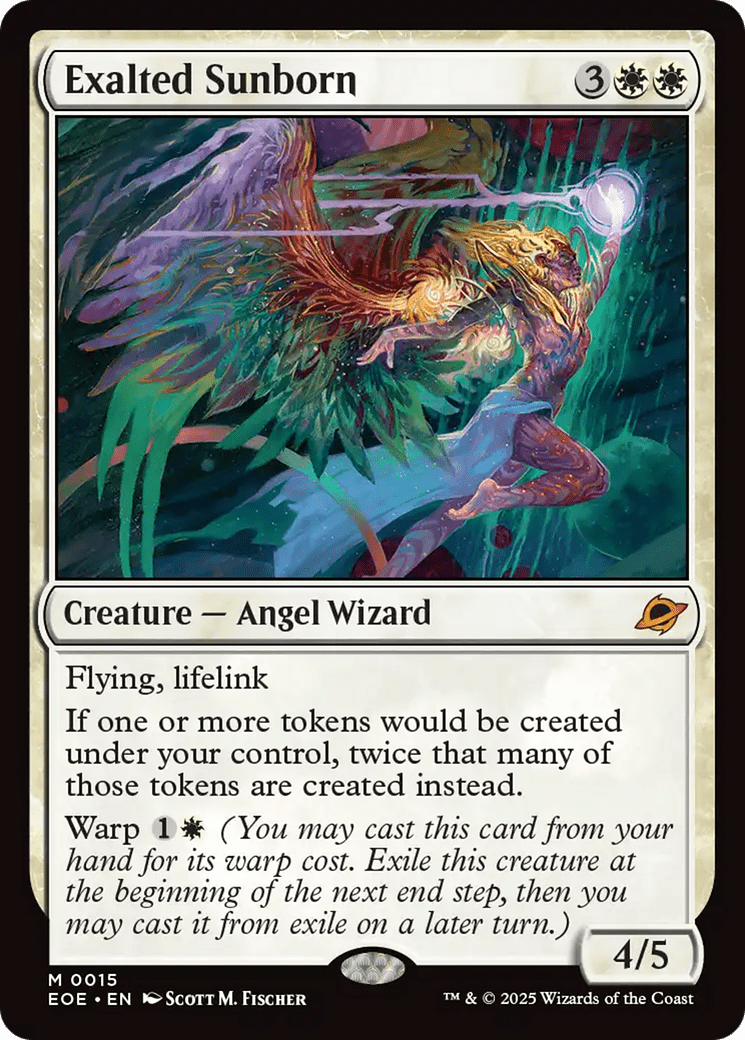
This is one of the two new Edge of Eternities’ warp cards in the deck, and the card that enables most of the Arena-breaking token combos. In combination with Phelia or Ephemerate, you can cast this card for its two mana warp cost and then blink it to cheat on the mana cost, also known as “scamming”. Another way to pseudo-scam this card is to give it offspring with Cottontail Caretaker, leaving behind 2 1/1 copies to continue the token nonsense on a later turn. Additionally, after warping back to exile, Sunborn keeps the offspring from Cottontail, allowing even more token doubling once you get the mana to recast it for its original cost. This card is great to scam ahead of schedule, as it provides a powerful and evasive 4/5 flying body along with lifelink to sustain you as you pay life for MDFCs, The One Ring, or Ancient Tomb. A nice bonus for the card is that most common removal spells in the format struggle to answer it, aside from Swords To Plowshares. In many cases, however, you will find Sunborn dodging Fatal Push and Lightning Bolt on its way to ending your opponent’s life. Along with its scam capabilities, it creates token synergies with cards like Ocelot Pride, Cottontail Caretaker, and Ajani, effectively doubling the value of your other powerhouses, all for just two mana.
Starfield Shepherd
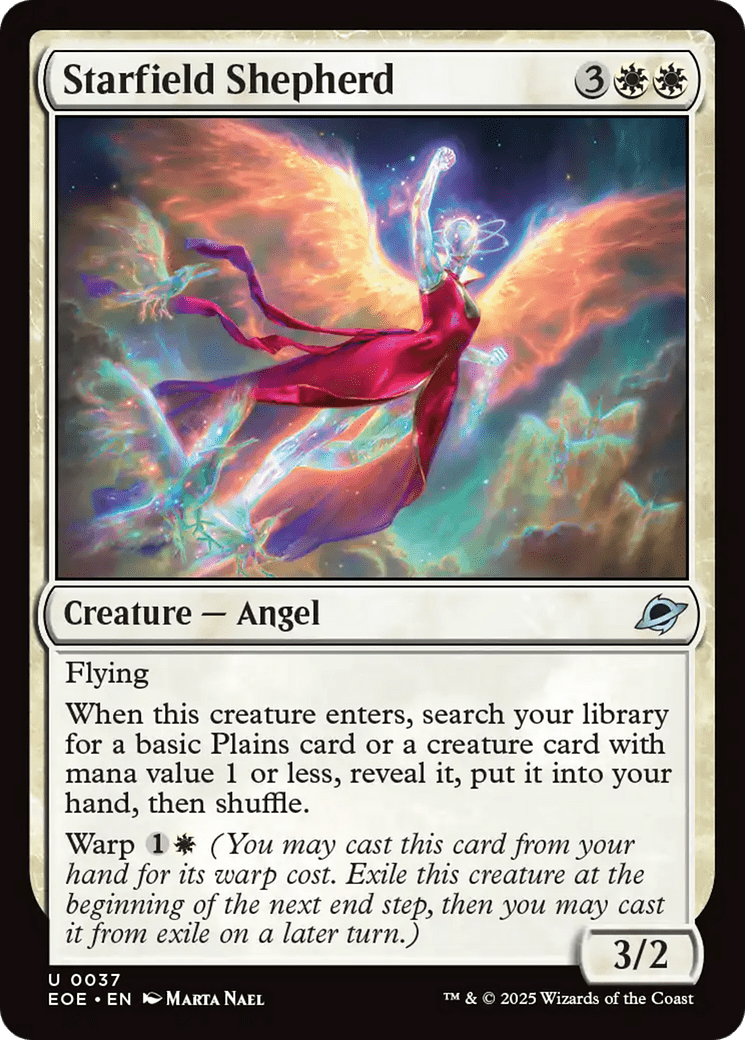
Starfield Shepherd is the Ron Weasley to Exalted Sunborn’s Harry Potter. Although it might not seem like the star of the show, it packs a powerful punch that is equally, if not more, troublesome when being scammed compared to Sunborn. Sunborn’s true power lies in combination with other cards in the deck, but Shepherd’s power lies in its ability to be a high-quality card by its own merit, creating card advantage and smoothing your draws when necessary. The difference between the two cards is their floor and ceiling power levels. Sunborn has a ridiculously high upside with all of the token generation that the deck is capable of, but on its own, it doesn’t do much aside from flying beats. Shepherd, on the other hand, can draw you the best cards in your deck when you need them for only two mana, even with no cards in hand and an empty board. It is flexible in an opening hand as a way to either get more high-quality cards if you are behind on board, or more lands if you are low on mana (which is fantastic in a 4x Strip Mine format). If blinked or scammed, Shepherd can accrue an absurd amount of value, doing its best One Ring impression by drawing you pure gas and stabilizing you in many dire situations.
Cottontail Caretaker
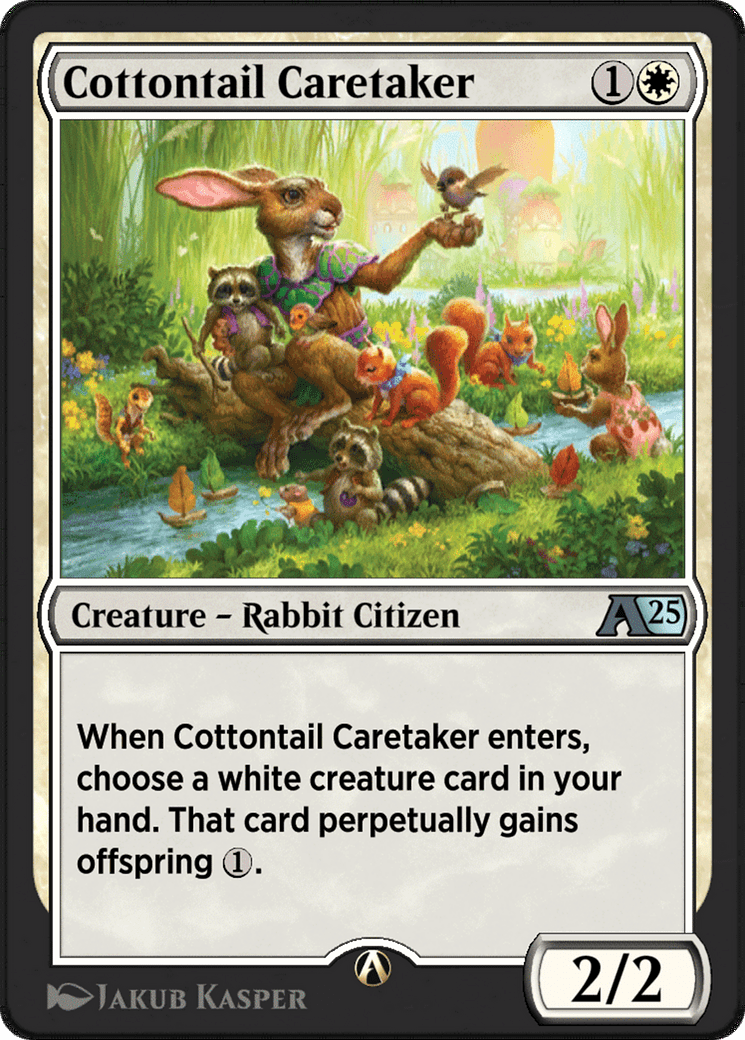
Okay, I know the new cards are cool, and they seem like that’s what the deck is built around, right? Wrong, Cottontail Caretaker breaks this deck straight in half. This is the true powerhouse card that enables all of the most broken play patterns that this deck can perform (more on that later). Normally, getting this card out as early as possible is the name of the game, allowing you to double up on any later threats you plan to play for only one mana, and being able to be blinked to continue doing so. Do you have an Ocelot Pride in hand? Okay, now you have two, and if you have the city’s blessing or Exalted Sunborn out, you can copy the offspring token for exponential value. Opponents have a hard enough time dealing with our actual factual Guides and Prides, but now they have to worry about token copies, which can consistently overwhelm opponents’ removal, forcing them into tough choices when deciding what card to use their interaction on.
Phelia, Exuberant Shepherd
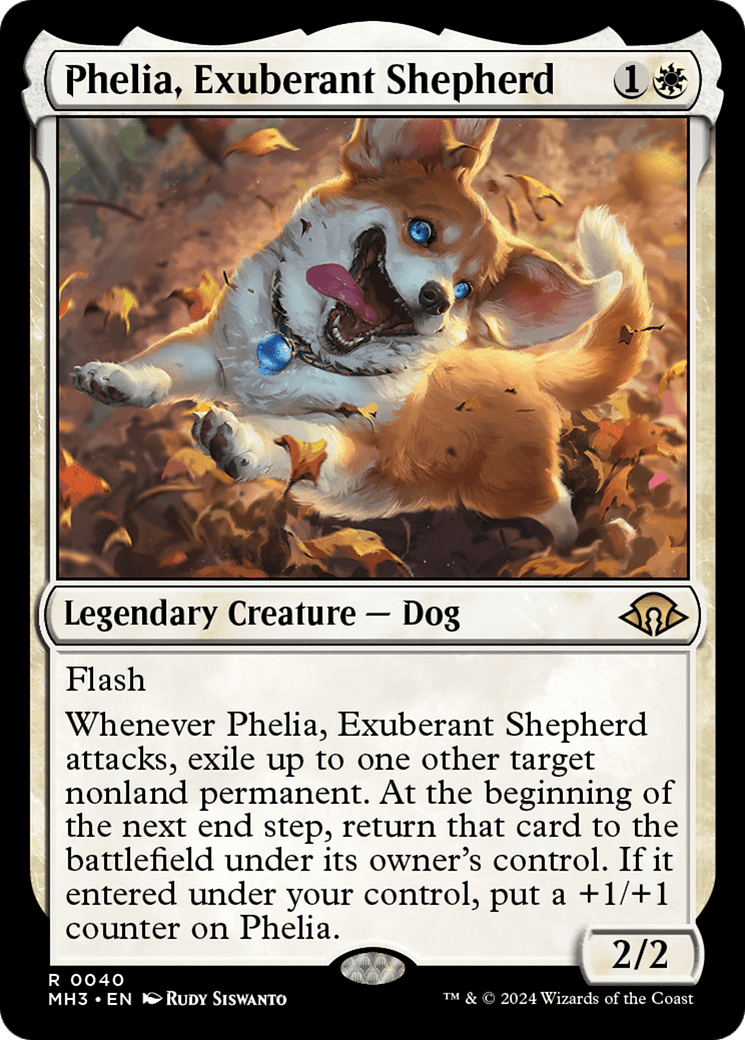
Last but not least, Phelia is the glue holding together the multiple angles this deck can take. It can blink our ETB creatures like Ajani or Cottontail for recurring value every turn, or can be used as a free way to scam our powerful warp cards. As a cheap creature with flash, it can be pesky for unsuspecting opponents, either swinging into our empty board or holding up a counterspell on our turn, expecting value. In any case, flash can create huge tempo swings if not accounted for, but many experienced players will see it from a mile away and play around it. Additionally, do NOT sleep on Phelia’s interactive capabilities. Many opponents might play a Chalice of the Void with 1 counter, expecting a free win from our Guide/Pride deck, only to run into a Phelia blinking it and resetting the counters, effectively bricking the card. Along with this and Witch Enchanter, Chalice is consistently a non-issue against a deck where one might expect it to be powerful. Along with this, Phelia can blink opposing blockers to swing in for the last few lethal damage points. With all of these options on one card, Phelia is one of our most flexible early game plays, and what we try and get out earlier than anything else (aside from Guide/Pride of course.
Gameplay Patterns/Tips
City’s Blessing
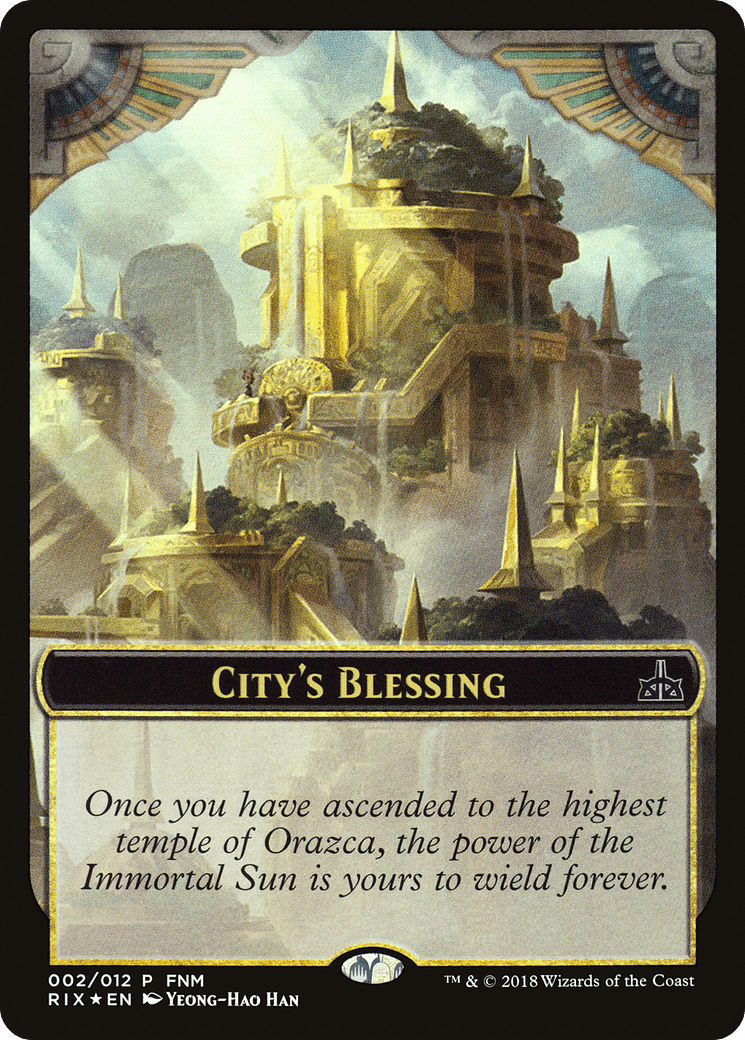
City’s blessing in this deck is significant when going for a lot of the main token synergies, because it can double up all tokens at the end of the turn. Getting the city’s blessing as early as possible is one of the best ways for this deck to truly pop off, as Shepherd searching pride can exponentially increase the amount of tokens made at end of turn, along with Sunborn doubling tokens, and token creation with Cottontail and Ajani, it’s not hard to see that Ocelot Pride will produce an absurd amount of tokens in the deck. Knowing when to hold your threats and token synergies until you get that perfect number of cards to trigger the blessing is an important skill that can determine match outcomes in certain situations. With Sunborn and the city’s blessing, if you have one Ocelot Pride trigger at the end of the turn, you end up making 6 cats per end step, which is a huge difference from the normal two cats you would make otherwise, which just shows the huge difference between having the blessing and not.
How do you crash Arena, though?
Knowing how to effectively utilize Cottontail’s offspring effect is one of the highest skill ceiling decision-making points that this deck has to offer. Many games hinge on your decision of what card to copy, and when. Getting cottontail out early and blinking it to stack offspring triggers is one of the strongest play patterns this deck is capable of and can lead to some ridiculous board states. For example, one common play pattern is casting Phelia on turn two and then casting Cottontail and blinking it on turn three. If you stack both triggers onto your Sunborn, then on the next turn, you can pay 4 mana for a double offspring warped Sunborn, which creates 10 1/1 token copies of the Sunborn. This is also possible to do with only one stack of offspring if you warp it with offspring and then recast from exile with offspring as well. If you can make two token copies of Exalted Sunborn, you just make 10 instead because of how it works with itself. At that point, any token production whatsoever will create the Arena limit number of tokens. Cottontail can also be game-changing with Ajani. Ideally, you cast Cottontail on turn one (through Chrome Mox), targeting Ajani, and then on turn two, you can cast Ajani with offspring, which creates two 2/1 cat tokens along with flipping your Ajani, allowing you to buff both cat tokens and set up Ajani’s ultimate as quickly as turn three. Lastly, I want to highlight Cottontail’s strength with Ocelot Pride and Solitude. By copying Ocelot Pride with City’s Blessing and gaining life in the same turn with Guide of Souls, lifelink, or any other method, then at the end of the turn, it’s easy to make 8+ copies of Ocelot Pride, and with the City’s Blessing, it’s clear how that can snowball into Arena limit tokens. With Solitude, Cottontail allows you to create a copy for a mere one mana, acting almost as a swords to plowshares, leaving behind a 1/1 lifelinking body that can be copied for even more interactive value. In many fair matchups, holding solitude and stacking offspring until your opponents overcommit to the board can lead to easy victories.

Playing Greedy And When To Do So (offspring stacks, patience for maximum value)
In many games, stacking offspring tokens or waiting to scam your warp creatures for extra value can be game-winning plays, but these plays require patience and, more importantly, greed. In many games, this deck might not play as one might expect. You don’t want to commit all of your cards to the board at the same time like normal aggro decks do, allowing your opponent’s removal to hit them before you utilize any of your busted synergies. Sometimes NOT playing your cards is the best play, allowing you to wait until you have enough mana to overwhelm your opponents with tokens and warp creatures. If you play out all of your creatures too quickly, you can be left with an empty hand and vulnerable synergy pieces on board that don’t accomplish much without support. Also, it is important to note that without a scam, warp is only effective as a mana discount for one turn, so choosing the right turn to use your mana as efficiently as possible with your warp synergies is massively important to winning the game. Think about every play you make with this deck and why; it’s not your average white weenie deck.
Sideboard Card Choices & Matchup Guide:
Disruptor Flute
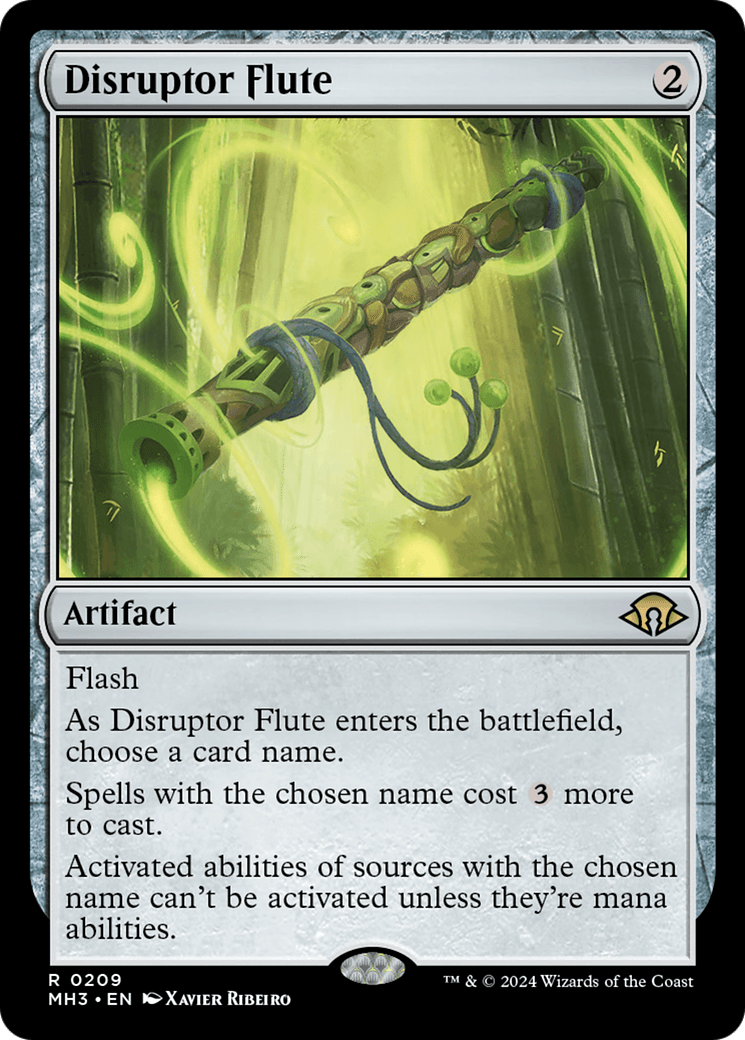
Disruptor Flute is one of the premier combo matchup crushers in the current format. Being able to accelerate into Flute on turn one more consistently with Ancient Tomb is a huge reason its power level and versatility are so high right now. In many cases, simply buying 2 or 3 turns against a combo deck can leave them vulnerable to our huge boards and allow us to swing in for lethal, so the fact that Flute can place certain combo pieces like Show and Tell at such a high mana cost can destroy the opponent’s curve. Additionally, it is important to understand how Flute and Phelia play together. By holding up two mana on an opponent’s turn, you force them to guess between whether you have Flute or Phelia, which can lead to misplays if they incorrectly guess. Lastly, you can abuse Phelia’s blink effect to rename cards with Flute as the game goes on if it seems like the Flute is not effective enough to stop the originally named card.
Angel of Eternal Dawn
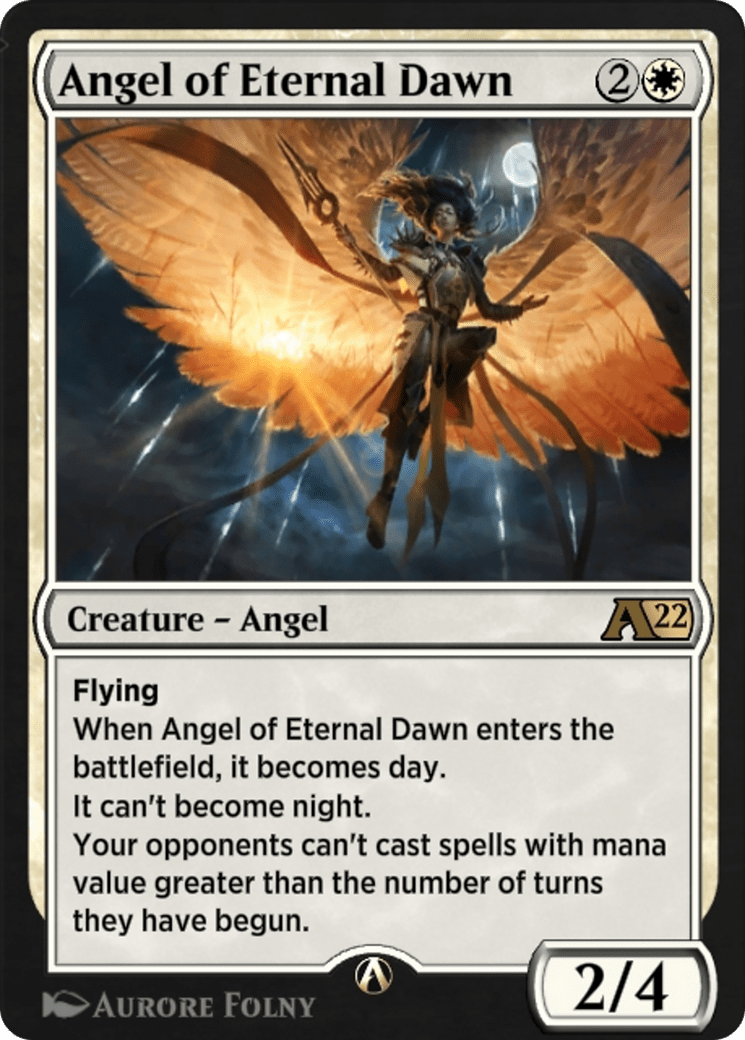
Angel of Eternal Dawn is a fantastic way to slow down Show and Tell (SnT) decks while still having massive equity against popular Eldrazi matchups. Angel slows the game down against fast mana and combo decks, forcing opponents to play honestly with their mana while allowing us to still cheat on it. Slowing down our explosive Eldrazi opponents gives them no chance to get under our inevitable token combos with fast mana, and prevents SnT opponents from casting their most powerful spells for free off of Omni, giving us a window to interact with them and shut them out of the game through attacks.
Archon of Emeria
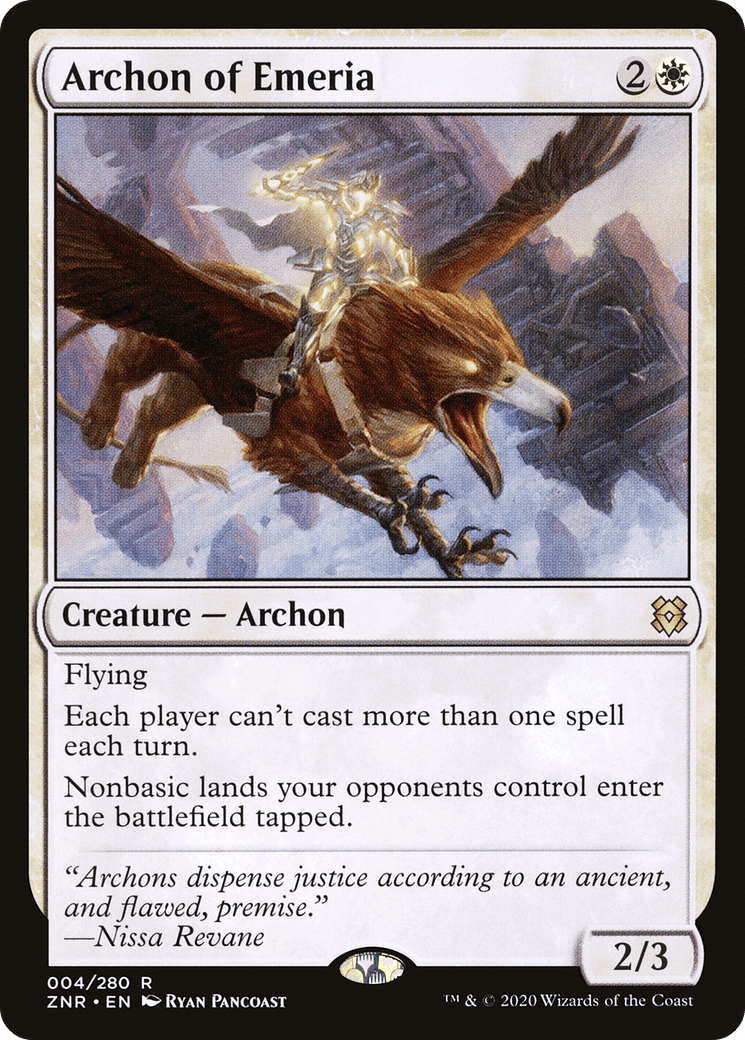
Archon of Emeria is the most powerful interaction that you can play against SnT decks currently. Cards like Vexing Bauble or Lavinia can be blanked by Veil of Summer or Abrupt Decay, but Archon prevents any spells at all past the initial SnT, allowing you to untap and respond to their SnT or swing in for the kill. Additionally, getting this down early can limit your SnT opponents to only one dig spell a turn, slowing down their game plan significantly and making it harder to find their combo. The only card that I think is as good at stopping SnT as Archon is Roiling Vortex, because, similar to Archon, it affects the casting of spells, meaning they cannot resolve or take effect until it is too late.
Static Prison
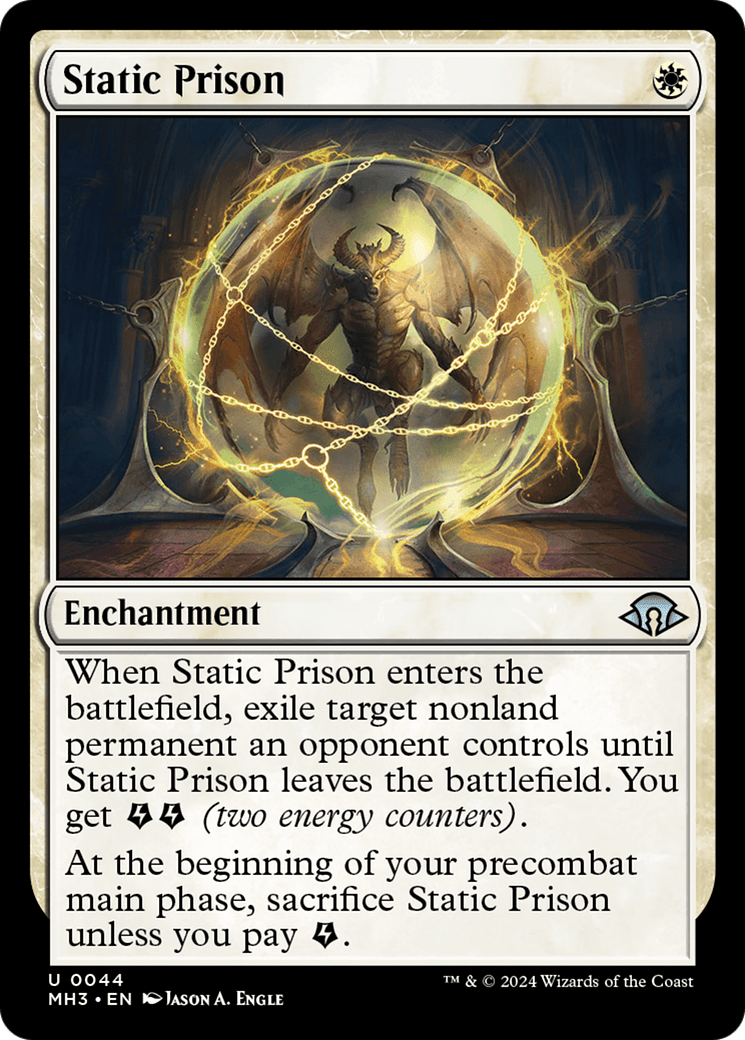
Static Prison is our catch-all removal spell for any unexpected shenanigans or threats that we cannot answer with Solitude. Important things to use Static Prison for would be The One Ring, or any other high-value artifact or enchantment like Overlord of the Balemurk, Birthing Ritual, or Fable of the Mirror Breaker. It is also available as your 5th and 6th interactive cards in fair/aggressive matchups like Mono R, Mardu Energy, or Eldrazi Aggro.
The One Ring
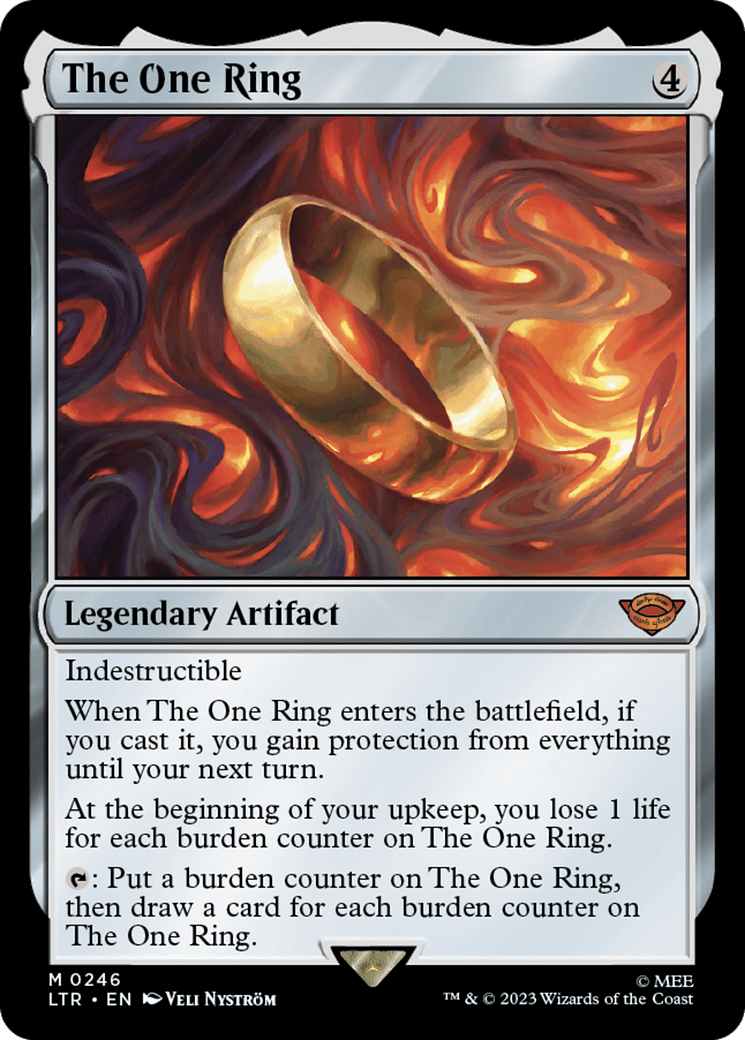
Lastly, we have a sole copy of The One Ring in the sideboard. This is primarily for any fair and interactive midrange matchups, primarily Mardu Energy or Mono B. These decks aim to rip cards from your hand and board and leave you topdecking, but The One Ring can quickly turn the game around in those types of situations as a one-card draw engine and get you out of many sticky situations. It is possible that in some metagames, 4 Rings in the 75 is correct, but currently, I have built my sideboard more focused on beating combo rather than fair matchups. Additionally, this card is important to beat cards like Toxic Deluge or Pyroclasm, which can be huge tempo swings normally, but by being able to refuel off of The Ring, it is less of a big deal.
Possible Considerations
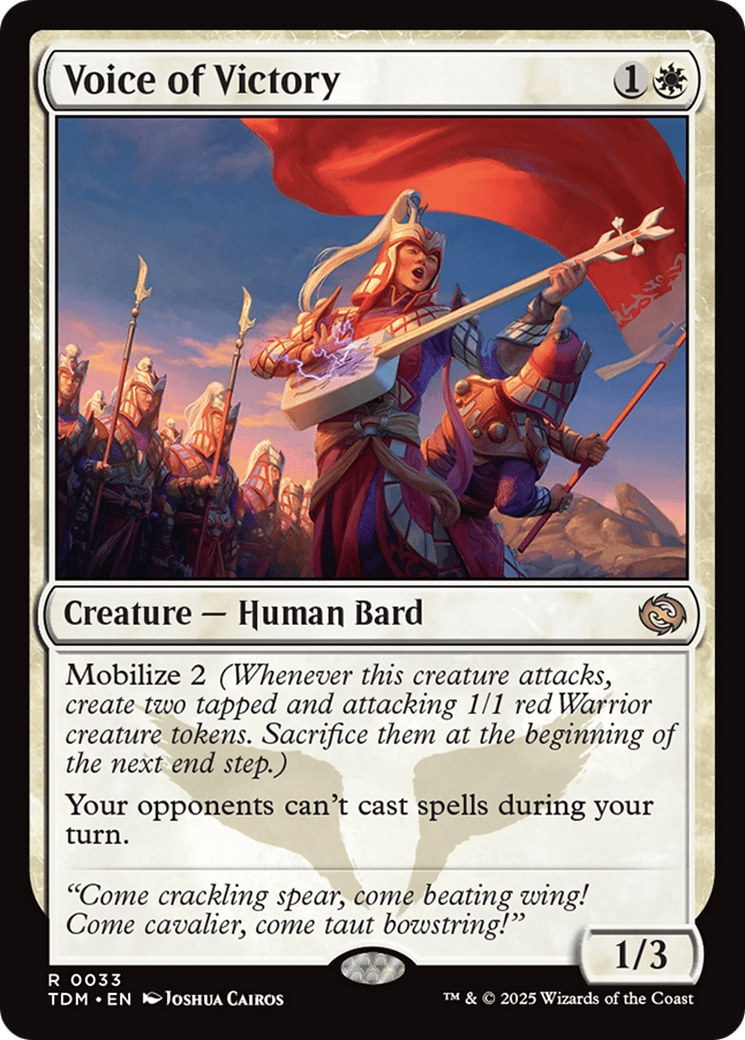
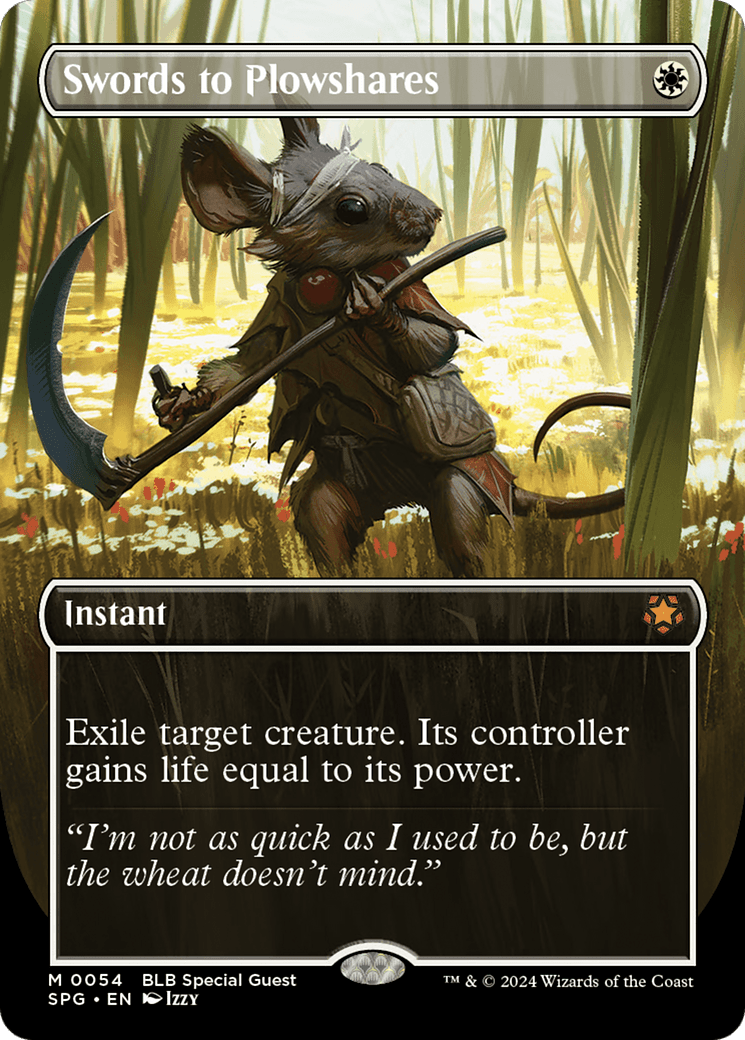
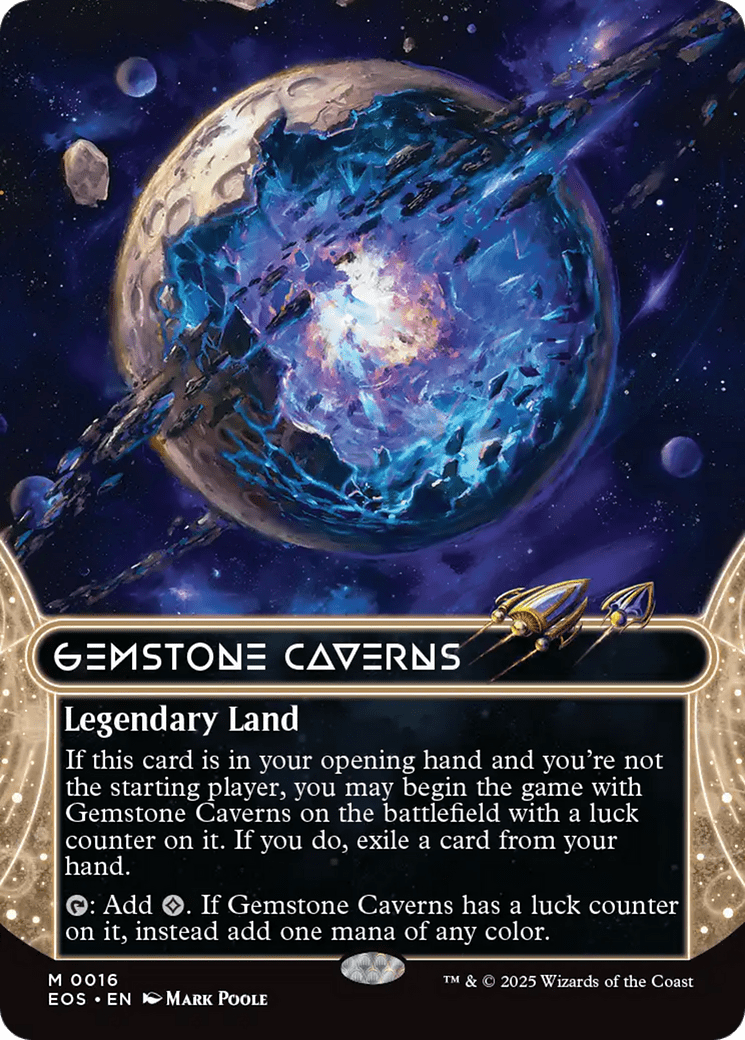
Some cards that I considered and might be good in metagames different from the current one are Voice of Victory, Swords to Plowshares, and Gemstone Caverns. Voice of Victory is a highly powerful creature that synergizes well with your token strategy while also coming down early as a great way to protect yourself against controlling draw-go piles. However, in the current meta, these decks don’t seem as popular, and our maindeck gives them a tough enough time already that I felt it to be unnecessary, but that can change depending on the meta. Swords to Plowshares is likely the best white creature removal spell of all time, but we play Static Prison instead to be more flexible against artifact and enchantment threats. If the meta shifts to favor a deck like Mardu Energy or some other aggro deck, Swords is worth a consideration. Finally, Gemstone Caverns was a powerful addition to the format through EOE, but I value all of the space in our sideboard for cards against combo and I think even in an ideal situation where you get Gemstone in your opener, it can work poorly with additional copies and with Chrome Mox or Solitude, since you already pitch a lot of cards, so you don’t want any more card negative plays in most matchups.
Sideboard Notes
Currently, Show and Tell is the format menace, with the new Ancient Tomb and Saiba Syphoner/Sublime Epiphany infinite combo tech, the deck is overwhelmingly powerful and near impossible to interact with. In addition to this, our deck is a fair midrange plan, making combo a poor matchup already. This is why I included up to 12(!!) cards for the SnT matchup postboard, giving us a fighting chance to beat all of the ladder degenerates.
Matchup Guide
Show and Tell / Slot Machine
| IN | Out |
| +4 Archon of Emeria | -1 Solitude |
| +4 Angel of Eternal Dawn | -3 Ephemerate |
| +4 Disruptor Flute | -2 Starfield Shepherd |
| -3 Ajani, Nacatl Pariah | |
| -2 The One Ring | |
| -1 Phelia, Exuberant Shepherd |
Notes: Try to mulligan to 1 or more hate pieces (stop at 5), and prioritize getting down threats early with fast mana to create a clock, while holding Archon or Angel in hand to put in of SnT. Flutes should be played as early as possible, naming SnT.
UBx Frog
| IN | Out |
| +2 Static Prison | -1 Exalted Sunborn |
| +1 The One Ring | -1 Ephemerate |
| -1 Solitude |
Notes: Play more patiently in this matchup and squeeze as much value as possible out of your cards. Be very careful about counterspells and removal interacting with your scam lines, as this can put you behind on card advantage if you overcommit too early into interaction. Some lists might have hand hate cards like Thoughtseize, so be careful about stacking offspring on only one card; sometimes it is better to spread the love.
Mardu Energy
| IN | Out |
| +2 Static Prison | -1 Exalted Sunborn |
| +1 The One Ring | -1 Ephemerate |
| -1 Phelia, Exuberant Shepherd |
Notes: Focus on getting +1 trades out of your cards. A lot of the time, stacking offspring on Solitude is a great way to turn the tide in this matchup, but don’t make the mistake of going all in on it only to get it peddled when you don’t have mana. Cards like Starfield Shepherd and The One Ring are extremely important to rebuild against all of their interaction, and removing their threats before they can snowball is a top priority.
Eldrazi
| IN | Out |
| +2 Static Prison | -2 Starfield Shepherd |
| +4 Angel of Eternal Dawn | -3 Ephemerate |
| -1 Ajani, Nacatl Pariah |
Out: , -2x Solitude,
Notes: Against Eldrazi, removal is less prevalent, so being greedy and going fast is the name of the game. They want to get a lot of mana and drop bombs, so our goal is to play a lot of fast creatures and kill them before they can do so. Almost all Eldrazi decks play Chalice of the Void, so when mulliganning, think to yourself if you can beat a Chalice on 1. A lot of the time, you can just ignore their creatures and focus on your game plan, because although Eldrazi decks can be aggressive, we have so much lifegain that it usually doesn’t matter. The One Ring is also very popular in these decks, but don’t panic; most of the time, it just contributes to killing them faster, combined with their Ancient Tombs.
Matchup Notes
Unfortunately, since the sideboard is so lopsided against combo decks, we don’t have many cards for other matchups, but that is only because this deck is so good at beating midrange and aggro brews that it is not too much of an issue. Sideboarding light in those matchups will likely lead to victories, whereas that is not as much the case for combo. The flow chart against any fair deck is: Do you want more card advantage in this matchup? If yes, play an additional Ring for a more redundant card like Shepherd or Ajani. Do you want more removal in this matchup? If yes, then do similar cuts to bring in Static Prison. The only matchup where we have practically 0 cards for is hard control, although Flute can sometimes be good against opposing Rings and planeswalkers, and our sideboard Ring can sometimes be good against board wipe heavy decks (I am talking to the maindeck Supreme Verdict Gandalfs). However, hardcasting Ring for 4 can be risky into open mana, since Mana Drain will be a huge tempo swing if they can cast it on your Ring, so be careful.
Lastly, I want to highlight the strength of this list against popular new EOE cards like the Eldrazi decks and Strip Mine. This deck is extremely low to the ground and operates well on low mana, with a lot of value creatures that are engines turn after turn, even without mana, and Shepherd to search lands is a huge difference maker in that matchup. Eldrazi, on the other hand, struggle to answer our huge abundance of threats since they only run a low amount of single target removal, and their aggro game plan is not quick enough to beat our lifegain, especially when slowed down postboard.
Also, since the meta is brand new currently, I want to apologize for not having a more in-depth sideboard guide with more matchups. I wanted to include only the decks that I think will still be around post-EOE, and, to be frank, you don’t sideboard too much in matchups other than combo, so just trust in the deck to be the better midrange/aggro deck when it’s necessary, and you will be okay in most situations.
